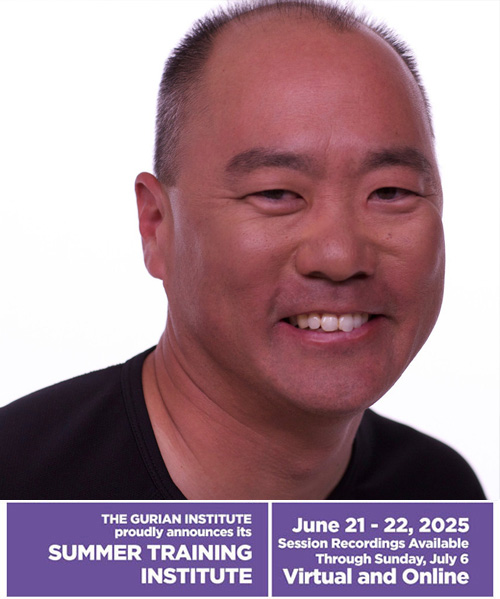Do you feel like you are living in a culture at war between sex and gender? Is that war paralyzing, or at least confusing, your efforts to develop gender equity in your school or other system? My own answers to both questions are “Yes.” I see a creeping weaponization of the false dichotomy between sex and gender that pits different populations against one another, and results in danger to children.
There is a better way. Sexual dimorphism (male/female brain biology) and gender fluidity are both real and they are not, in real science, oppositional to one another. Understanding how and why can translate into systemic change in the schools and other systems. This week’s blog provides tools you can use to this end. Our GI team will also delve into these ideas and tools at our Summer Training Institute in June.
Is There a Gender War in Your School?
The false dichotomy, and its parallel culture/gender war, came to our GI team recently through a school district. In an email then phone call, we learned that the Director of Professional Development wanted to utilize our Minds of Boys and Girls and our Boys and Girls Learn Differently professional development. This director had seen the Success pages of www.gurianinstitute.com and knew that our work helps districts and schools to close gender, achievement, and behavior gaps, and aligns with racial equity initiatives and trauma-informed education, all of which were also focus areas for this district.
“But,” this PD Director said (she has asked that her name and her district remain anonymous), “when I discussed the GI training with our committee, and even though I got support from everyone else, one of the members was vocal about not wanting GI because, she said, ‘sexual dimorphism does not exist.’ ‘Male’ and ‘female’ have been ‘debunked’ by the scientific community, she said, and even more, she said to discuss them is abusive to our LGBTQ+ students and families. Others on our committee, better versed in the science, tried to gently persuade her that she was wrong. I pointed out that your programs include strategies for working with LGBTQ+ students and families, but she was adamant.
“Most interesting to me is that she could give no proof for her position except to pull up references to a few of the usual naysayers on Twitter. This was frustrating for many of us who want to stick with the best science, but people pretending they are experts based on what they read in social media is something I find happening more and more these days. Because I had some of Michael Gurian’s books on the table with me, I showed them to her, including Saving Our Sons and The Minds of Girls where there is a lot of good science on both sexual dimorphism and gender fluidity. This, too, did no good. She did not care about the Gurian books or other similar research. Twitter’s reference to a couple ‘studies’ was enough for her.
“We just had to stop talking about this and move to another agenda item. We will end up having GI help us this year, I believe, but it occurred to me that I should ask if you can provide a blog in which you collect various and handy tools we can use in meetings. We need to quickly respond to people who do not have real science on their side but are adamant about their position. Will we ever convince these people that they probably mean well but they are fighting the wrong battle? I don’t know. Thank you.”
Tools for Removing the False Dichotomy
Many thanks back to this director for the request. Here is a set of tools you can deploy in your Board, committee, and planning meetings. They will help you remove the false dichotomy. Within these tools, you will find reference and response to some of the people and organizations that promote the dichotomy, and the false war between sex and gender. Their ‘studies’ (which are mainly opinion pieces couched in ‘science’) comprise a small branch of junk science but do show up a lot on Twitter and similar social media. Ultimately, neither sex nor gender is going away: we must work with both together. The Gurian Institute does that, tailoring our work to the sex, gender, racial, and socio-economic needs and culture at each school and district.
Tool 1: Success and Effectiveness of Boys and Girls Learn Differently Programs
The GI work has proven most effective over the decades, as these two webpages show:
https://gurianinstitute.com/success/
https://gurianinstitute.com/gi-model-schools/
Tool 2: Video Blog with Michael Gurian
This nine-minute video is easy to use in a decision-making process and in meetings. Michael responds to the false dichotomies in a diplomatic but decisive way and shows the success that can happen when each part of the sex and gender puzzle is better understood.
https://gurianinstitute.com/transgender-brains-dont-negate-male-and-female-brains/.
Tool 3: Quotes by Primary Scientists in the Field of Sexual/Gender Biology
These quotes from primary scientists capture some of the essence of sex-on-the-brain and sex-in-genetics. None of these primary scientists will pit sex and gender against one another, as you’ll see, because both sexual dimorphism and gender fluidity are robust. But they do make the point that sexual dimorphism is our human baseline, which is a crucial point in the debate. Sex comes first because it is molecular; gender comes during child and adult development. Both are important. If we do not take care of the sexual biology part, millions of children will fall through cracks in our systems because we will not set up our systems to take care of the male and female brain. If we miss the gender part, we miss an important identity developer.
“There are 10 trillion cells in the human body, and every one of them is sex-specific. We’ve had a unisex vision of the human genome, but men and women are not the same in our genome, and men and women are not the same in the face of disease. All our cells know on a molecular level whether they are XX or XY.”
–David C. Page, M.D., Professor of Biology at the Massachusetts Institute of Technology (MIT) and Director of the Whitehead Institute, Ted Talks.
“More than 99% of male and female genetic coding is exactly the same, but that 1% percentage difference influences every single cell in our bodies – from the nerves that register pleasure and pain to the neurons that transmit perception, thoughts, feelings, and emotions.”
–Louann Brizendine, M.D., Professor of Neuropsychiatry at University of California – San Francisco, Founder of the Women’s Mood and Hormone Clinic, and author of The Female Brain and The Male Brain
“The X (female) chromosome has about 1,000 genes; the Y (male) has around 70. The X is one of the biggest chromosomes; the Y is short and stubby. The X contains extremely significant genes that make and maintain the brain and control immune function… All my (male) cells are using an identical X – the one I got from my mother. So, if that X has any problems – genetic mutations, spelling mistakes in the genetic code – tough luck for me. But a woman has two Xs: one from her mother, one from her father. So, if one X has a problem, the healthy X can compensate.”
–Shäron Moalem, M.D., Ph.D., author of How Sex Works and The Better Half
“Everywhere we look, the two sexes are startlingly and unexpectedly different, not only in their internal function but in the ways that they experience illness. To care for them, we must see them as who they are: female and male.”
–Marianne J. Legato, M.D., author of Eve’s Rib: The New Science of Gender-Specific Medicine
“Sex differences in the brain are real at the molecular level. For instance, they are now found in mechanisms of pain, effects of stress, how an autism-linked gene regulates neurophysiology, how an intellectual disability-linked gene affects the biochemistry of synapses…and much more.”
–Catherine Woolley, Ph.D., Professor of Neuroendocrinology, Northwestern University
Tool 4: More Depth, via Targeted Blogs, on Sex-on-the-Brain, the Gender Spectrum, and the Effectiveness of New Systemic Change Models
The brain and gender differences are robust throughout all cultures and on all continents because they come into human beings via the X and Y chromosomes. Male/female brain differences begin in the womb and continue throughout life, as the articles/studies below show. These differences apply to every student, every child, every adult. Our human systems succeed or fail in large part based on how those systems utilize applied science to help boys and girls across the spectrum to learn, live, grow, and thrive. Here are reference points to click in your meetings:
There are more than one thousand articles and studies on https://www.michaelgurian.com/about/research-reference-list/.
Other useful references:
https://www.sciencedirect.com/science/article/pii/S1878929318301245
https://www.ncbi.nlm.nih.gov/pmc/articles/PMC2040300/
https://www.nature.com/articles/nature10523
These two blogs by Michael Gurian, the first one shorter and the second one longer with more detail, specifically respond to the false dichotomy, revealing, as does the Gurian video blog earlier, that there are 4 – 5 different areas of sex and gender that are all valid, and all require our attention.
Psychology Today, https://www.psychologytoday.com/blog/the-minds-boys-and-girls/201803/she-he-x-they
https://gurianinstitute.com/answering-those-who-believe-boys-and-girls-do-not-learn-differently/
Call Us As You Need Us
At the Gurian Institute we believe our success comes from connecting brain science to evidence-based and proven practical strategies for classrooms, homes, counseling offices, workplaces, and public policy. Our work fits under gender equity and racial equity funding because it targets every one on the spectrum, thus it includes trauma-informed education, equity and excellence, socio-economic and ethnic educational parity issues, pre-school to prison pipeline response, and LGBTQ + initiatives. On the www.gurianinstitute.com website, you’ll see further resources and pages that detail all of our assets.
You will also find a page dedicated to our Summer Training Institute in June 2021. We hope you will join us there and please reach out to us at info@gurianinstitute.com to start a conversation about bringing our work into your school, district, and organization.










